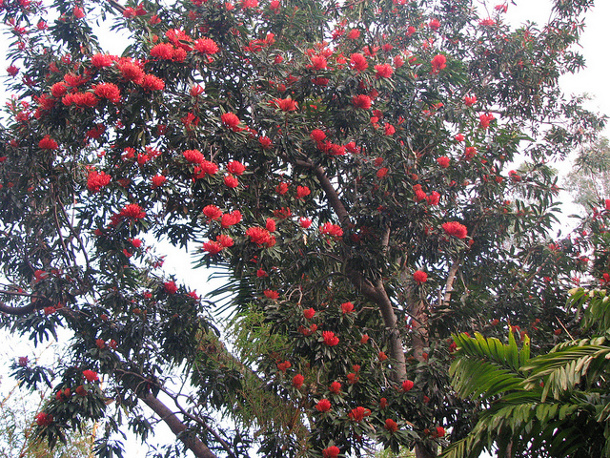Today’s guest post is from Nathalie Shanstrom, a sustainable landscape architect with the Kestrel Design Group. It’s a little science-y, but still very readable. If you’re not a stormwater geek, don’t be deterred – there’s a lot of great information in here. -LM
This series of blogs examines how plants contribute to nutrient reduction in bioretention systems. In my previous entry, I examined how plants can improve dissolved nitrogen retention. Today, I’ll look at phosphorus removal.
How Plants Affect Phosphorus Removal In Bioretention
Plants affect phosphorus (P) removal of bioretention systems on the same timescales as nitrogen removal (covered in part 1 of this blog series):
(1) on the most rapid timescale, soils with plants have higher microbial populations then barren soils, and therefore higher rapid P uptake by microbes;
(2) on a longer timescale, plants then take up phosphate taken up by microbes;
(3) and on an even longer timescale, P taken up by plants is converted to recalcitrant soil organic matter.
One additional way in which plants are thought to increase phosphorus removal, and especially phosphorus removal lifespan, of bioretention systems is by extending soil sorption capacity. While some phosphate can be removed by bioretention soil by sorption (binding to soil), “the practical removal efficiency is limited by the equilibrium concentration of the media, i.e. the solution concentration at which compounds will neither sorb nor desorb from the media. If the solution surrounding the media is at a concentration greater than the equilibrium concentration of the media, nutrients will be removed as compounds in solution sorb to the media. However, if the solution surrounding the media is at a concentration less than the equilibrium concentration of the media, nutrients may be released from the media to the solution”(Henderson 2009). So as more and more phosphate sorbs onto a bioretention soil, phosphorus retention capacity will eventually be exhausted.
In a study by Henderson (2009), the phosphate equilibrium concentration was reached within 6 months of exposure to nutrient loads equivalent to stormwater. Lucas and Greenway (2008) found total phosphorus retention capacity of media without vegetation was exhausted after only five years.
Because plants and microbes can take up phosphate sorbed to soil, they can “renew” a soil’s sorption capacity in between storms.
Accordingly, in a study of long term nutrient removal performance of bioretention mecocosms, Lucas and Greenway (2011) found that flow-restricted vegetated bioretention mecocosms with media amended with P-sorbing materials still retained up to 99% of phosphate applied in stormwater after the equivalent of more than 30 years of P loading.
So what does this all mean?
Healthy vegetation is essential to maximizing phosphorus removal of bioretention systems, and, in Henderson’s words (2009), “Media for bioretention systems should be selected for the suitability to support vegetation, within the constraints of the desired hydraulic conductivity” (bold added). In a comparison of loamy sand, sand, and gravel, he found that loamy sand produced the healthiest vegetation and greatest nutrient removal. Lucas and Greenway (2008) also found highest total Phosphorous removal in vegetated loam, compared to vegetated sand, vegetated gravel treatments, unvegetated loam, sand, and gravel treatments.
Part I: How plants improve dissolved nitrogen retention.
Part III: What factor affect vegetation performance?
References
Henderson, C.F.K. (2009) The Chemical and Biological Mechanisms of Nutrient Removal from Stormwater in Bioretention Systems. Thesis. Griffith School of Engineering, Griffith University.
Lucas, W. C.; Greenway, M. (2008) Nutrient Retention in Vegetated and Non-vegetated Bioretention Mesocosms. J. Irrig. Drain. E-ASCE, 134 (5): 613-623.
Lucas, W. C.; Greenway, M. (2011). Hydraulic response and nitrogen retention in bioretention mesocosms with regulated outlets: part II–nitrogen retention. Water Environ Res. 2011 Aug;83(8):703-13.
Image: TheNerdyGardener






Leave Your Comment